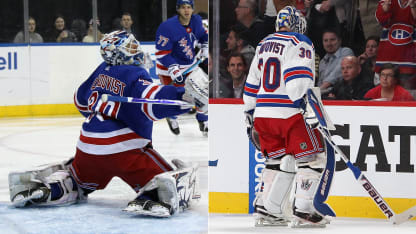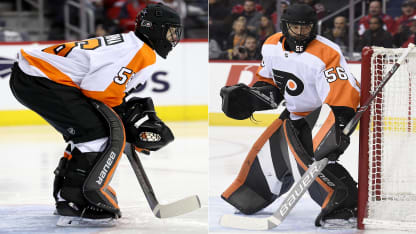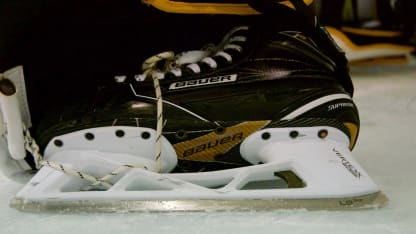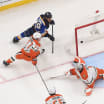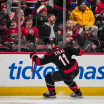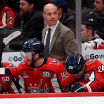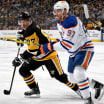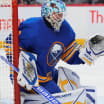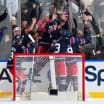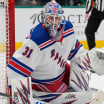In addition to removing the cowling, skate companies made the holder on the bottom of the skate taller, further improving the attack angle.
Not everyone is comfortable with the added height; it was one reason Price switched back to an old Graf cowling after trying a taller, no-cowling setup. But the benefits are obvious.
"It was a big adjustment because I used to be so low to the ice and it felt more stable," said Detroit Red Wings goalie Jonathan Bernier, who wears a True skate with the tallest holder. "But once you get used to it, you gain a few inches on height and your push, if you are in a butterfly, you don't have to get your leg as high because the clearance is so much better."
With the game getting quicker and players attacking more across the middle of the ice, goalies appreciate anything that improves their lateral mobility. Thus more goalies are adopting True's custom-fit boot, which is based on a monocoque (one-piece skin) design that started in speedskating. More than two-thirds of NHL goalies are wearing a True boot, whether it's with a nongoalie-style holder on the bottom, True's carbon-fiber, one-piece combination of boot and holder, or a traditional cowling, like Price uses.
Because of the feel of this boot, some goalies have even reduced how deep their blades are sharpened because they don't feel they need as much of an edge.
"Your foot is locked into the boot," said Red Wings No. 1 Jimmy Howard, who wore the Bauer no-cowling two-piece before switching to the True one-piece skate. "As soon as you took those old white cowlings off, it just felt like you were more connected to the ice. … Skates really are probably the biggest improvement we've made."
